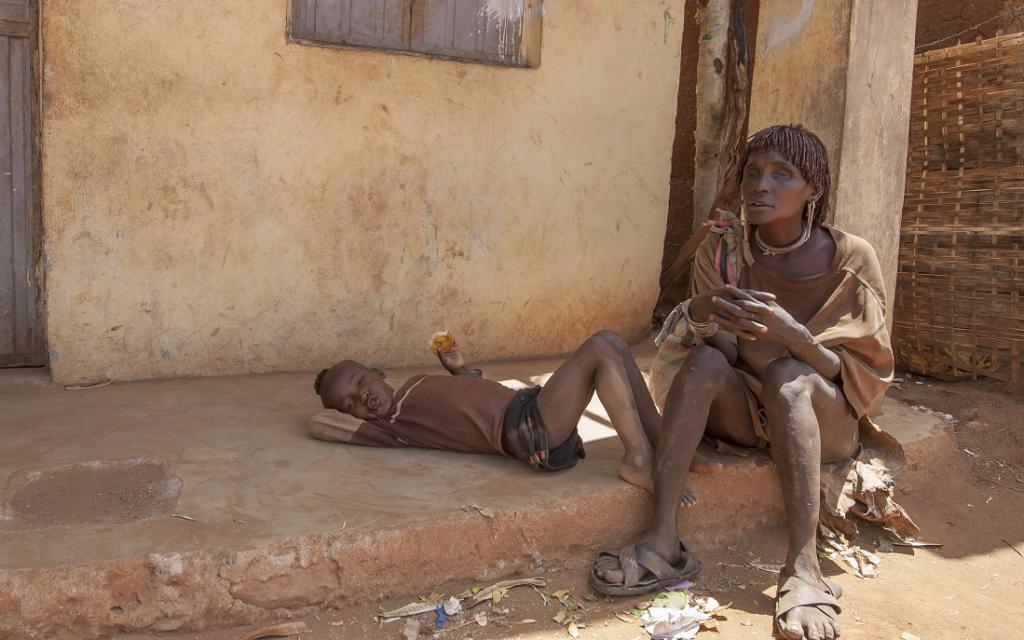

Poverty is getting concentrated and chronic in sub-Saharan Africa and rural areas



The world has beaten a desperate retreat in its war to get rid of extreme poverty, a good eight years before the Sustainable Development Goal (SDG) 1 target year of 2030. Now, there is no certainty on when the world will meet this goal of limiting extreme poverty to just three per cent of total population.
Instead, the World Bank’s latest Poverty and Shared Prosperity 2022: Correcting Courses report says that in certain places like sub-Saharan Africa and rural areas in most poor and developing countries, eradicating poverty is nearly impossible in the current situation.
The Bank’s latest report is the first comprehensive assessment of the impacts of the COVID-19 pandemic and the ongoing Russian invasion of Ukraine on global poverty. This comes at a time when for five consecutive years before the pandemic, the global poverty reduction rate had been slowing down.
The pandemic came as a once-in-a-life-time economic shock. But the war, by raising energy and food prices, has further worsened the situation. The poor became poorer and were hoping for a post-pandemic recovery when the war struck.
The rising food and energy prices and the onslaught of the climate emergency — extreme weather events impacting agriculture and also disasters wiping out assets and incomes — have not just made recovery impossible but also pushed the poor to chronic levels of poverty.
The result: the largest setback in the fight against global poverty since World War II. “These setbacks have altered the trajectory of poverty reduction in large and lasting ways, sending the world even further off course on the goal of ending extreme poverty by 2030,” says the report.
In 2020, the pandemic pushed 70 million more people into poverty. As a result, some 719 million people lived below the international extreme poverty line of $2.15 per day or a poverty rate of 9.3 per cent in comparison to 8.4 per cent in 2019.
The world is recovering from the pandemic but the impacts of the war would result in pushing 685 million people below the extreme poverty line by the end of 2022.
The report estimates that “7 per cent of the world’s population — roughly 574 million people — will still struggle in extreme poverty in 2030.” This is more than double the SDG1 rate of three per cent.
Inequality has been widening as a result of the pandemic, a reversal in trend in many decades. Like the recovery from the pandemic, the dip in poverty has been uneven. The developing and poor countries have added the maximum new poor and the poverty level among the poor have further deepened in these countries.
“The poorest people bore the steepest costs of the pandemic: income losses averaged four per cent for the poorest 40 per cent, double the losses of the wealthiest 20 per cent of the income distribution,” the report said.
This is a situation that the Bank forecasts as worrying.
“The policymakers now confront a tougher environment: Extreme poverty is concentrated in parts of the world where it will be hardest to eradicate — in sub-Saharan Africa, in conflict-affected areas, and in rural areas,” it says.
For instance, sub-Saharan Africa has the world’s highest poverty rate at 35 per cent and it accounts for 60 per cent of the world’s extreme poor population. To reach the SDG1 level by 2030, each country here needs an annual economic growth of nine per cent for the next eight years.
This sounds impossible currently given that most of the countries in the region recorded below two per cent growth even before the pandemic.
We are a voice to you; you have been a support to us. Together we build journalism that is independent, credible and fearless. You can further help us by making a donation. This will mean a lot for our ability to bring you news, perspectives and analysis from the ground so that we can make change together.

Comments are moderated and will be published only after the site moderator’s approval. Please use a genuine email ID and provide your name. Selected comments may also be used in the ‘Letters’ section of the Down To Earth print edition.